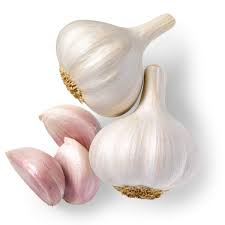
Garlic is effective in cooking, health remedies, skin care, and natural cleaning for daily life.
What is garlic?

Garlic is a bulb-like plant that belongs to the Allium family.
It is commonly utilized as a flavoring ingredient in various cuisines around the world.
Garlic has a strong and pungent fragrance and flavor.
It is known for its medicinal properties and is believed to offer numerous health advantages, including boosting the immune system and reducing the risk of certain diseases.
Certainly, garlic is a versatile ingredient that can be used in various ways to improve the flavor of dishes and provide a lot of health benefits.
Here are some effective ways to use garlic in daily life:
Cooking:
Garlic is a staple in many cuisines and can be used to flavor a wide range of dishes.
Chop or mince garlic cloves and sauté them in oil or butter as a base for soups, stews, sauces, and stir-fries.
It can also be added to roasted vegetables, meats, and pasta dishes.
Pickled Garlic:

Pickling garlic cloves in vinegar or brine can mellow their sharpness and make them a tangy addition to salads or antipasto platters.
Garlic Oil:
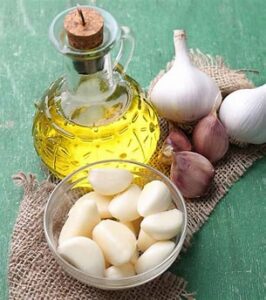
Combine olive oil with garlic cloves by gently heating them together on low heat.
When the garlic becomes aromatic and lightly golden, take it out of the oil.
You can use garlic-infused oil for culinary purposes; for example, drizzle it on salads or use it as a dipping sauce for bread.
Raw Garlic:
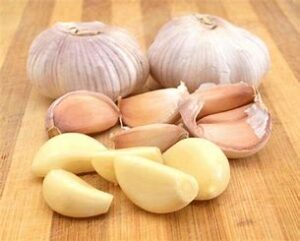
For those who enjoy the pungent taste of raw garlic, it can be chopped finely and added to salad dressings, salsas, or as a topping for bruschetta. Be cautious of its strong flavor and use it sparingly.
Garlic Supplements:
Garlic supplements, such as garlic capsules or garlic extract, are available for those looking to potentially benefit from garlic’s health properties without the strong taste.
Consult a healthcare professional prior to utilizing supplements for medicinal reasons.
Garlic Powder:
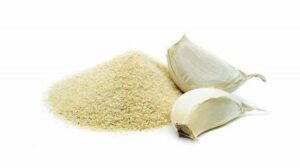
Garlic powder is a convenient way to add garlic flavor to dishes when fresh garlic is not available.
It’s excellent for flavoring meats, poultry, and vegetables, in addition to preparing garlic bread.
Garlic Butter:

Mix minced garlic with softened butter to make garlic butter.
Use it as a spread on bread, melt it over steamed vegetables, or use it to baste meats and seafood while grilling or roasting.
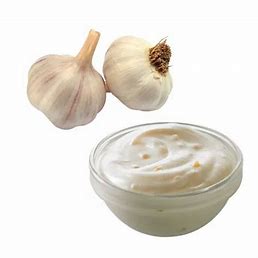
Garlic Paste:
Prepare a garlic paste by crushing garlic cloves using a garlic press or by finely chopping and then mashing them with the edge of your knife.
This paste can be used in marinades, salad dressings, or to flavor dishes where a fine texture is desired.
Natural Remedies:
Garlic has been utilized in traditional medicine for its possible health advantages, including immune system support and reducing cholesterol.
Some people consume raw garlic or garlic supplements for these purposes, but it’s essential to consult a healthcare provider for guidance.
Roasted Garlic:

Oven-roasting garlic bulbs until they turn tender and caramelized is a popular way to enjoy garlic’s sweet and mellow flavors.
Extract the roasted cloves from their skins and spread them on bread, mix them into mashed potatoes, or use them as a pizza topping.
Keep in mind that the intensity of garlic flavor can vary depending on its preparation and cooking method.
Start with smaller amounts if you’re not familiar with its strength and adjust to your taste preferences.
Consequently, garlic can enhance the depth and complexity of dishes, making it an essential ingredient in your everyday culinary collection.
Where does our garlic come from?
Garlic is grown in many parts of the world, is widely produced, and has effective health properties in daily life.
The origin of the garlic you find in your local market or store can vary depending on where you live and the time of year.
Here are some of the key regions and countries known for garlic cultivation:
Spain:
Spain is one of the largest garlic producers in Europe.
Spanish garlic, particularly varieties like “ajo morado,” is highly regarded for its flavor and quality.
United States:
Garlic is grown in various states across the U.S., with California being the largest producer.
California garlic, often called “California white garlic,” is known for its mild flavor and is widely available in the United States.
India:
India is another major garlic producer and exporter.
Indian garlic is known for its pungent flavor and is used in various regional cuisines.
Italy:
Italy is known for its high-quality garlic, and it’s used extensively in Italian cuisine.
Italian varieties like “Aglio Rosso di Nubia” are highly sought after.
Mexico: Mexico is another important garlic producer, and Mexican garlic is commonly used in Mexican and international dishes.
China:
China grows the most garlic in the world and sells a large amount of it to other countries.
You can often find Chinese garlic in many markets around the world.
Argentina:
Argentina is a significant garlic producer in South America, and its garlic is exported to various countries.
Other Countries:
Garlic is grown in Egypt, France, South Korea, Russia and many other countries.
Each region may have its own varieties and flavors of garlic.
The availability of garlic can also vary seasonally, with fresh garlic often harvested in the summer months and garlic available year-round.
Additionally, some specialty garlic varieties are grown by local farmers and may be available at farmers’ markets or specialty stores.
Remember, where the garlic comes from can affect its taste. Different types and growing conditions can make it taste or feel spicier in different ways.
Garlic is a versatile ingredient, and choosing the type of garlic can enhance the flavor of your dish in a variety of ways.
How can garlic be effective in home remedies to treat various ailments in daily life?
Garlic has been used in traditional medicine for centuries for its potential health benefits.
While it is not a substitute for professional medical advice and treatment, garlic may offer some natural remedies for certain ailments.
Here are some effective ways to use garlic in daily life home remedies:
Boosting the Immune System:
Garlic is known for its immune-boosting properties due to its allicin content.
To support your immune system, try adding more garlic to your daily meals.
You can chop or crush garlic and mix it into foods like soups, stews, or salad dressings.
Cholesterol Management:
Some studies say that garlic might help reduce cholesterol levels.
Eating garlic regularly or taking garlic supplements could potentially have a positive impact on cholesterol, but consult a healthcare provider before using it as a primary treatment.
High Blood Pressure:
Garlic may help lower blood pressure due to its potential cardiovascular benefits.
Incorporating garlic into your diet or taking garlic supplements may be considered, but it’s important to consult a healthcare professional for guidance.
Digestive Health:
Garlic may aid in digestion by promoting the production of digestive enzymes.
Including garlic in your meals can potentially support overall digestive health.
Ear Infections:
Garlic oil can be used as a natural remedy for ear infections. Create garlic oil by infusing olive oil with crushed garlic cloves.
Warm a small amount of the garlic oil and apply a few drops to the affected ear after it has cooled down.
Additionally, consult a healthcare provider if you suspect an ear infection.
Sore Throat and Cough:
Garlic has natural antimicrobial properties.
To soothe a sore throat or alleviate coughing, make garlic tea by steeping minced garlic in hot water.
In addition, add honey and lemon for added relief and flavor.
Fungal Infections:
Garlic has antifungal properties and can be used in home remedies for fungal infections like athlete’s foot.
Crush garlic cloves and mix them with carrier oil, then apply the mixture to the affected area.
Be cautious if you have sensitive skin, as garlic can cause irritation.
Wound Healing:
Crushed or minced garlic can be applied topically to minor wounds and insect bites.
Its antibacterial properties may help prevent infection and promote healing.
Mosquito Repellent:
Rubbing crushed garlic on exposed skin can act as a natural mosquito repellent due to its strong odor.
However, be aware that the smell can be quite pungent.
Hair Loss (Topical Application):
Some people use garlic-infused oil as a hair treatment to potentially promote hair growth and strengthen hair.
To create garlic oil, infuse olive oil with crushed garlic cloves and apply it to the scalp.
Leave it on for a short time, then wash thoroughly.
Always exercise caution when using garlic in home remedies, and consult a healthcare provider if you have underlying medical conditions or are taking medications.
Garlic can interact with certain medications and may not be suitable for everyone.
Additionally, topical use of garlic can cause skin irritation in some individuals.
It’s essential to perform a patch test on a small area of skin before applying garlic remedies to larger areas of the body.
In short, garlic has many health benefits.
Indeed, garlic is renowned for its potential health benefits, and it has been used for medicinal purposes for centuries.
Some of the key health benefits associated with garlic include:
Antioxidant Properties:
Garlic contains compounds like allicin, which have antioxidant properties.
Antioxidants help combat oxidative stress and reduce the risk of chronic diseases.
Improving sexual function:
Garlic has been associated with numerous possible health advantages, including enhancing sexual performance by boosting blood circulation and improving fertility, particularly in men.
Certain research indicates that garlic may aid in increasing blood circulation, which could prove beneficial for addressing conditions such as erectile dysfunction in men.
Garlic may also elevate nitric oxide levels, a substance that assists blood vessels in widening to facilitate improved blood circulation.
As a result, it can potentially help improve erectile function.
Although studies in humans are limited, some research shows that garlic and its components could improve male fertility, enhance testosterone levels, and increase sperm production.
Cardiovascular Health:
Garlic might aid in decreasing blood pressure and reduce the risk of heart disease.
It can enhance cholesterol levels by reducing LDL cholesterol (the “bad” cholesterol) and increasing HDL cholesterol (the “good” cholesterol).
Additionally, it possesses anti-inflammatory properties that support the cardiovascular system.
Anti-Inflammatory Effects:
The compounds in garlic may have anti-inflammatory properties, which can be beneficial for conditions related to chronic inflammation, such as arthritis.
Antibacterial and Antiviral
Properties:
Garlic has natural antibacterial and antiviral properties, which can help combat infections.
It is often used to treat various bacterial and viral infections.
Detoxification:
Garlic can support the body’s natural detoxification mechanisms by assisting the liver in eliminating toxins and waste products.
Diabetes Management:
Considering this, garlic may assist in regulating blood sugar levels in individuals with diabetes by enhancing insulin sensitivity.
Cancer Prevention:
Some studies suggest that garlic consumption may be associated with a reduced risk of certain types of cancer, particularly stomach and colorectal cancers.
Its antioxidants and sulfur compounds are thought to play a role in cancer prevention.
Its antioxidant properties and sulfur compounds are believed to contribute to cancer prevention.
Skin Health:
When applied externally, garlic can aid in addressing minor skin issues, such as acne and fungal infections, thanks to its antibacterial and antifungal characteristics.
Immune System Support:
Garlic is believed to strengthen the immune system, making it more resistant to infections and illnesses.
It is often used as a natural remedy to prevent and treat colds and flu.
It’s important to note that while garlic offers potential health benefits, it should not be used as a substitute for medical treatment or prescription medications.
If you have specific health concerns or medical conditions, consult with a healthcare provider before using garlic or garlic supplements for therapeutic purposes.
Garlic may interact with certain medications, and excessive consumption can lead to side effects, including digestive discomfort and skin irritation.
What are the side effects of garlic?
Although garlic is typically safe for eating, it can lead to some side effects in particular individuals.
Common side effects of eating garlic include bad breath, body odor, and digestive issues such as heartburn, gas, and nausea.




